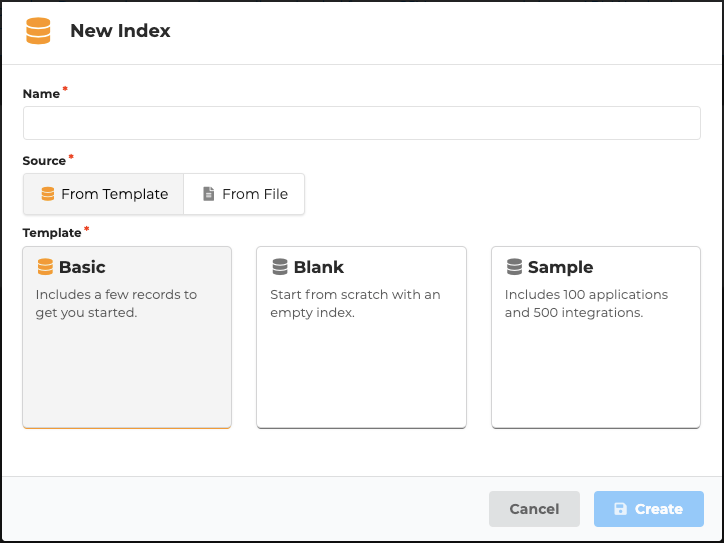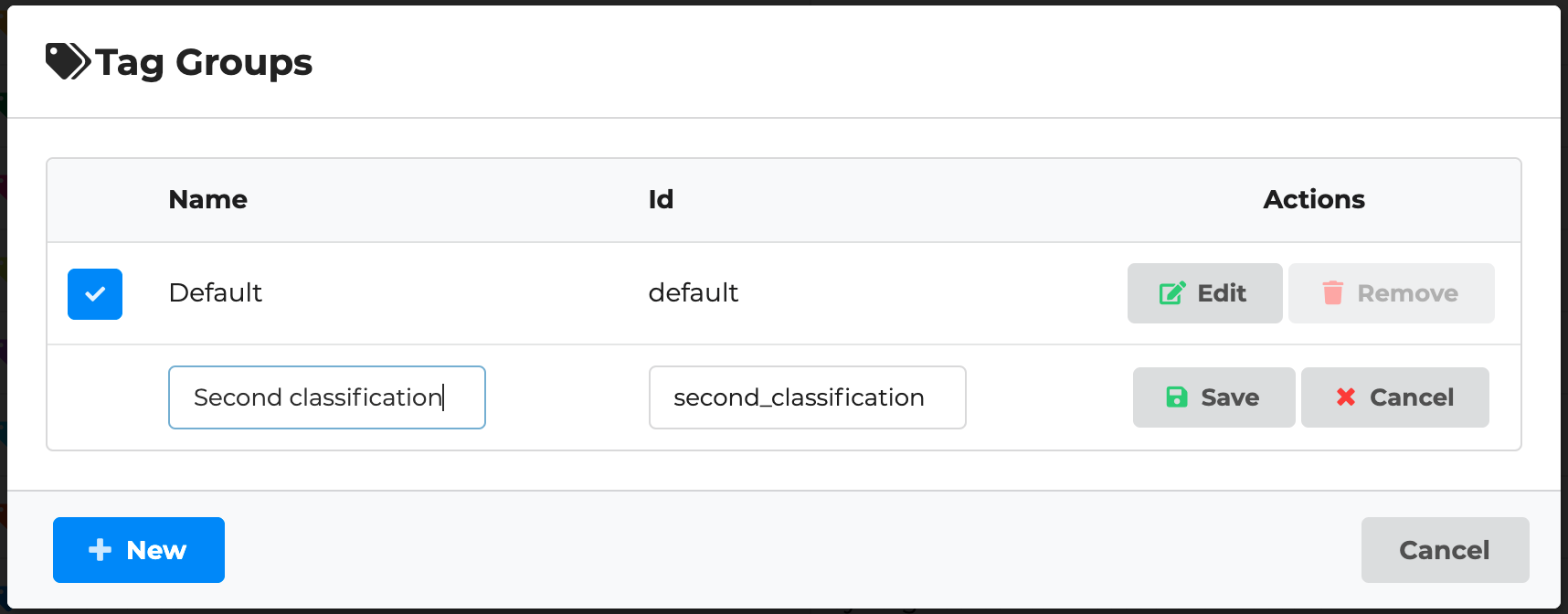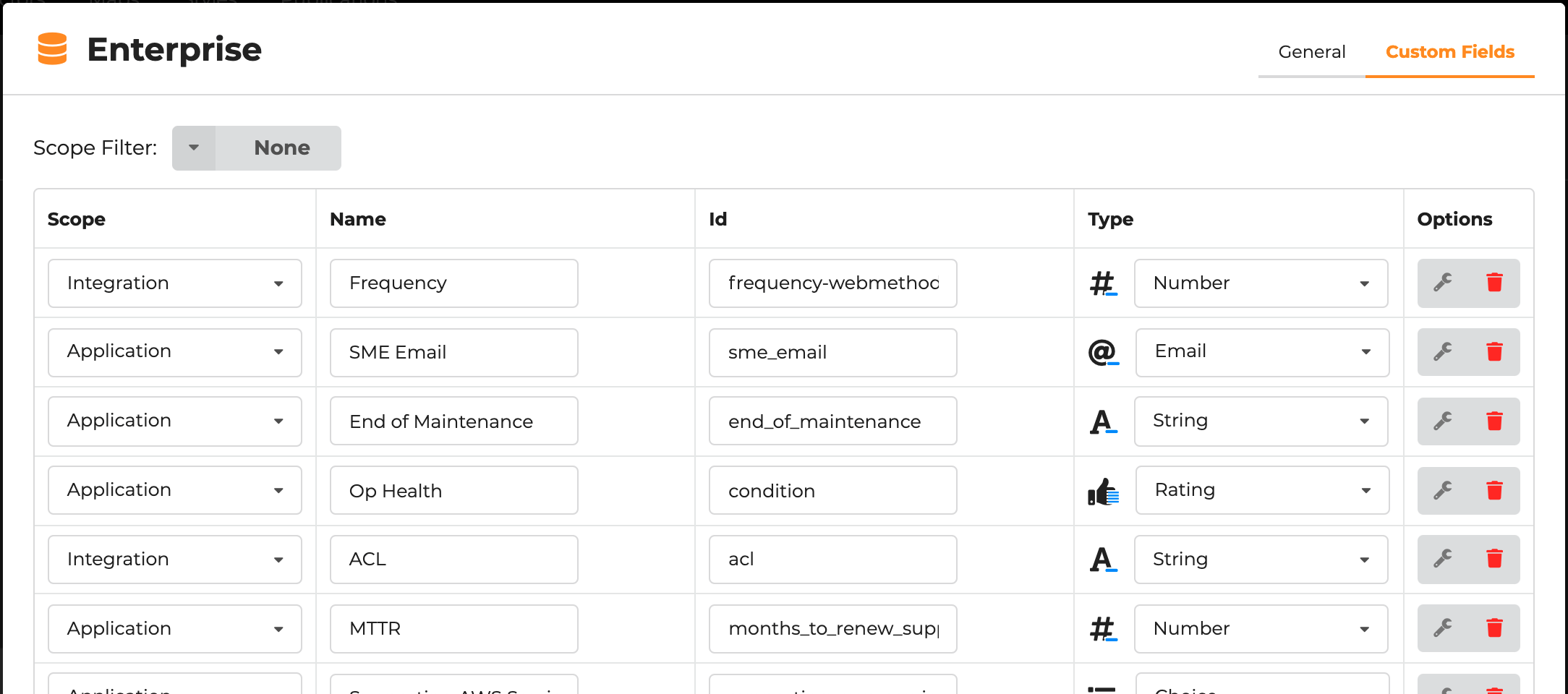Index Overview
Create an index and customize
Everything in Aplas starts with a software index. Maps are built from an index, styles light up depending on custom fields within an index, and you can publish an index directly to your users.
Creating an index
- Within Aplas Studio, navigate to the index area.
- Click create and give your index a name.
- Select a template (our basic or sample templates are an excellent place to start).
- Once you have created an index, there are many ways to populate it. See our guide to populating a software index.

Index structure
The Aplas index schema is designed to be simple, understandable by the broadest audience and flexible. There are four types of assets within an index:
- Application: Broadly known systems that hold data at rest.
- Integration: Carries specific data between two applications.
- Collection: Lists of applications/integrations.
- Component: Support applications/integrations.

Each asset type can have an associated tag:
- Application Tag: Generally used to set the business owner of an application (e.g. Accounting Department). It is possible to apply multiple tags to an application, but each must come from a different tag group.
- Integration Tag: Generally used to describe different integration technologies (e.g. API, MFT, ESB). It is possible to apply multiple tags to an integration.
- Collection Tag: Common tags include "Business Process" or "Project Scope". It is possible to apply multiple tags to a collection.
- Component Tag: Common tags include "Software Library" or "Infrastructure". It is possible to apply multiple tags to a component.
Tag groups apply only to application tags and can be accessed from within application tags by clicking on the "Default" button (top). They allow an application to have multiple tags assigned, providing a way to create map regions with different classifications.

Custom fields
The flexibility of the Aplas index comes with custom fields. You can add such fields to all index types, a specific type, or even a particular tag of assets. It is also possible to set the visibility level, which can be helpful when you have a lot of fields.

You can create custom fields from within index settings.
Updated 4 months ago